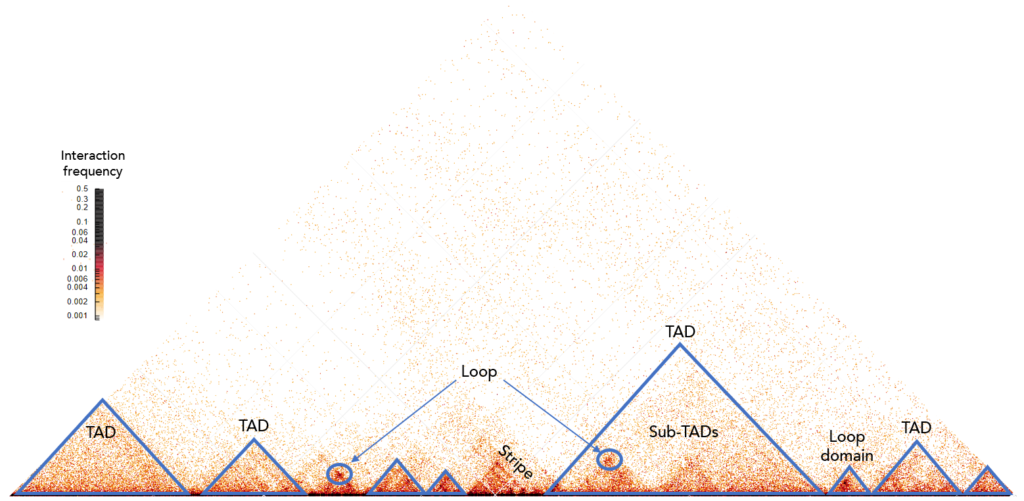Learn more about Proximo Hi-C kits optimized for human samples
The study of chromatin architecture is an emerging and growing area of genomic research that is refining our knowledge of the interconnectivity and organization of the genome. The structural elements of chromatin architecture range from loops between loci that are <1 Mb apart, to hubs of interchromosomal contacts and chromosomal compartments. Within this compartmentalization, topologically associating domains (TADs) are chromatin regions that interact more frequently within themselves than between each other. TADs can be highly conserved across species and cell types. The demarcation of TAD boundaries (TAD calling) facilitates the functional annotation of genes, and may contribute to the understanding of cell differentiation, development, and adaptation; as well as genetic diseases and cancer.1

Chromatin structural elements observed in a Hi-C map. This heat map corresponds to a 4 Mb-window of human chromosome 1. Each pixel represents an interaction between two genomic loci. Color intensity represents the frequency of the interactions between each pair of loci; the darker the color, the more frequent the interactions. Triangular areas represent the regions in the genome where chromatin interactions occur. Most of the TADs are designated with blue triangles. Some TADs contain smaller sub-TADs. A darker dot on the apex of a triangle typically corresponds to a chromatin loop. A stripe (or track) represents dynamic structures that can be formed upon the release of individual CCCTC-binding factor molecules from chromatin.2 Visualization adapted from HiGlass.3
Because Hi-C allows for the genome-wide examination of all interacting loci, it is ideally suited for the identification and high-resolution characterization of the structures and organization associated with cell biology. Phase Genomics have partnered with QIAGEN to expand access to Phase’s industry-leading Hi-C technology for epigenetics research.4
